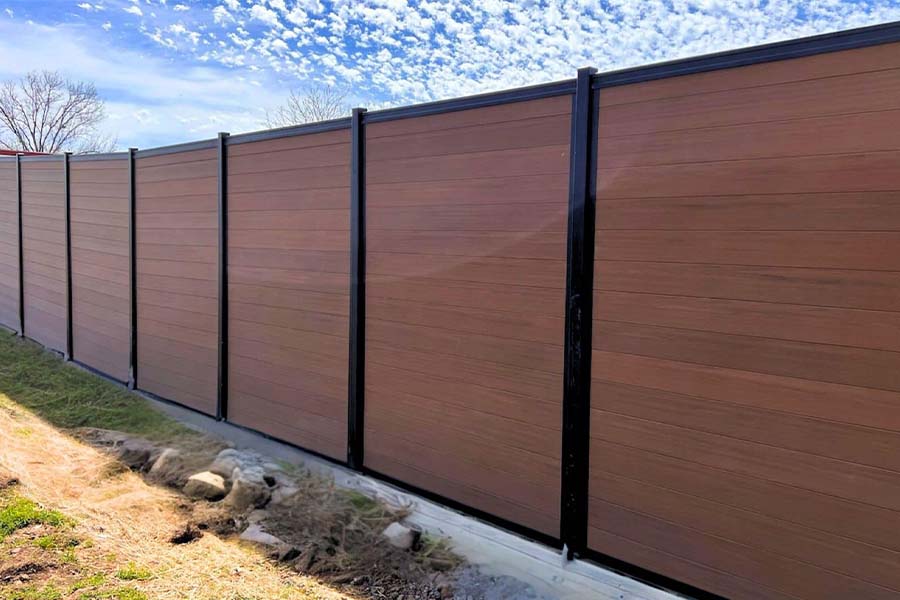All Categories
Featured

When mounting a fence, picking the right product is crucial to stabilizing performance, aesthetic appeals, and spending plan. Timber, vinyl, and light weight aluminum are among the most frequently selected fence materials, each with its staminas and drawbacks. This guide checks out the advantages and disadvantages of these options to aid you make an informed decision.

Wood Fence. Pros:. Natural Beauty: Wood's timeless beauty can boost any kind of home with its traditional and warm look. Personalized: You can paint, tarnish, or sculpt wood to fit your style preferences. Budget friendly: Timber fence is originally much more budget-friendly compared to a few other materials. Eco Friendly: As a renewable energy, timber is eco-friendly and usually thought about environmentally friendly. Disadvantages:. Maintenance-Intensive: Normal sealing, paint, or discoloration is called for to avoid damage from weather and parasites. Prone to Decay: Without correct care, timber can rot, warp, or split with time. Much shorter Life expectancy: Usually, timber fencings last 10-15 years, depending on the kind of wood and upkeep. Wood is a great alternative for those that value aesthetics and are eager to purchase normal upkeep to preserve its appearance and sturdiness.
Vinyl Fence. Pros:. Reduced Maintenance: Vinyl requires very little care-- simply occasional cleansing with soap and water. Weather condition Resistant: It does not warp, rot, or succumb to insect damage, making it very durable in various environments. Durability: Vinyl fences can last 20-30 years with little to no repair work. Style Variety: Available in a vast array of shades, styles, and appearances, consisting of wood-like looks. Cons:. Greater Preliminary Cost: Vinyl fencings are a lot more costly in advance contrasted to timber. Vulnerability to Cold: In extremely chilly climate, vinyl can end up being breakable and prone to splitting. Minimal Fixing Options: Matching replacement panels can be challenging if damages occurs. Plastic fence is ideal for property owners trying to find a durable, low-maintenance service that offers contemporary adaptability.

Light Weight Aluminum Fencing. Pros:. Rust-Proof: Aluminum withstands corrosion, making it an exceptional selection for damp or wet settings. Durable: Regardless of being light-weight, aluminum is strong and can stand up to extreme weather. Low Upkeep: It needs minimal upkeep, normally only occasional cleansing. Long Lifespan: Light weight aluminum fences can last decades without significant degeneration. Stylish Design: Frequently used for ornamental objectives, light weight aluminum secure fencing adds a streamlined, advanced seek to residential properties. Disadvantages:. High First Financial investment: Aluminum fences are among the pricier alternatives on the marketplace. Much less Privacy: The open styles common with aluminum fence do not provide much privacy. Vulnerable to Damages: While resilient, light weight aluminum can dent if hit with enough pressure. Aluminum is an outstanding selection for homeowners focusing on looks and longevity without calling for much upkeep.
Making Your Decision. When determining in between aluminum, wood, or plastic fencing, consider your priorities:
Wood suits those that value an all-natural look and do not mind placing in upkeep initiative. Plastic is the ideal choice for those looking for a low-maintenance, weather-resistant solution. Light weight aluminum supplies sleek design and resilient toughness but may lack personal privacy. By thoroughly examining these materials' functions, you can pick a fence that matches your residential or commercial property while fulfilling your useful and visual demands.
Latest Posts
Stylish Convenience Starts from the Ground Up
Published Apr 20, 25
1 min read
Discovering the Conveniences of WyHy Share Interest-bearing Account
Published Apr 20, 25
1 min read
A Retro Eating Experience at Gasoline Allie's.
Published Apr 20, 25
2 min read